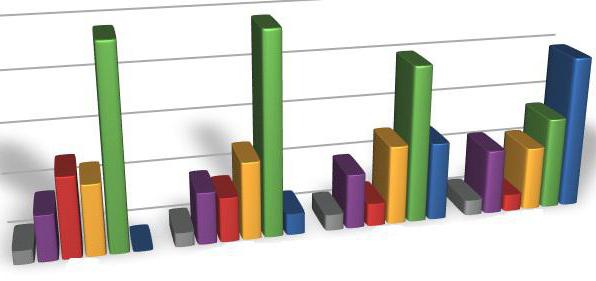Successful sales within a country or region inevitably involve risk analysis. One of the most relevant indicators to determine the potential volume of product sales in a new segment for a company is the capacity of the selected market.
The essence of the term
One of the main tasks, the implementation of which is necessary for the successful development of the company, is to determine the market capacity. Without this indicator, it is difficult to establish how promising the activities of a particular enterprise are.

Determining the market capacity comes down to identifying the potential volume of goods sold within a specific time period (in most cases, a year is taken into account). At the same time, to form a position according to which any sales are possible, regardless of the number of competitors and market saturation, is rather reckless.
It is also worth noting that it is necessary to determine the capacity of the market relevant for the enterprise, using money or tons as settlement units. The capacity indicator can be measured in two categories: real and potential.
In the first case, the actual quantity of services or goods calculated in physical and monetary units that the market consumes over a certain period of time is determined. As for the potential capacity, it is a hypothetical indicator reflecting the maximum possible level of the volume of goods and services that can be sold, say, in a year.
Indicators of potential turnover are important, since they precisely allow you to objectively determine the prospects for integration into a particular market or its specific segment. The potential in the indicated direction of activity can be calculated using the following formula: potential market capacity + real = market potential of the enterprise.
The higher the identified potential is, the more attractive the market can be considered. In turn, when the difference between the two values is minimal, this indicates the stabilization of the market and the absence of growth. If we take into account the impact of competing companies, then with the fact of price pressure on the margin, the successful operation of the enterprise in this market segment is under obvious threat.
Why is the real market capacity measured?
This indicator is relevant for several reasons:
1. By identifying the real volume is determined by the share of the company in the desired market segment. The same scheme is used to constantly monitor company positions. The same data should be obtained in relation to key competitors.

2. Using the analysis of trends in capacity changes, relatively accurate sales planning and, as a result, the formation of the company's current marketing strategy become possible.
The market capacity is determined by various methods, each of which involves research with a different cost and amount of resources used. Moreover, the more expensive the technique, the more accurate the result will be obtained in the end.
Factors Affecting Capacity
Such an indicator as the capacity of the market for services and goods can be defined as an element that is stable enough for the vast majority of industries in Russia. Throughout the year, it can vary by 10-15%. It is worthwhile to understand what factors can influence the capacity indicator. These are the following elements:
- price fluctuations;
- mobility and demand elasticity;
- degree of market development;
- main characteristics of the product;
- advertising policy;
- macroeconomic indicators;
- the presence on the market of products having similar characteristics, etc.
How is capacity rating estimated?
It is impossible to single out any assessment method as universal. The selection of specific analysis tools is determined by the specifics of the enterprise.

If we consider a similar process in the Russian business sphere, it is worth noting that companies do not always have enough money for qualitative research, and besides, decisions are often made too quickly. In this case, the assessment of market capacity is made through the use of ready-made studies, which are secondary information.
If you consider the most popular criteria that apply in the assessment process, then it is worth highlighting the following indicators:
- volume of consumption;
- structural characteristics;
- indirect techniques;
- volume of sales;
- volume of production.
In this case, forming the analysis scheme, it is necessary to take into account the features of the promotion of goods from producer to consumer. To obtain an extremely objective result, it makes sense to combine several methods.
The parameters that are taken into account in the evaluation
When calculating the market capacity, the following indicators are taken into account:
- Territory. It is important to pinpoint the boundaries within which the study will be carried out. This may be a country, region, county or city, in other words, the territory where the company plans to conduct active business. To assess the capacity indicator in such large market sectors as a region or country, it makes sense to use state statistics. As for small territories, in this case, you can do field research since market statistics are in most cases not kept.
- Prices. Market size can be measured in monetary and physical units. But first, it is necessary to determine the prices (wholesale or retail) from which research will be based.
- Time. The most common time parameter used in capacity calculation is the year. This fact is explained by the ability to analyze various seasonal changes in demand and their impact on market size. As an example, we can cite such a segment as building materials, the sale of which in the vast majority of cases is subordinated to a particular cycle. For example, sales of skylights and roofing materials reach their peak in the fall. Based on this, it would be unreasonable to calculate the capacity of the building materials market on the basis of data obtained in the spring.
- Products Starting the evaluation process, it is necessary to determine the specific products, the demand for which will be analyzed.
- Segments. It is worth considering the fact that the market often consists of segments that are heterogeneous, so their size must be determined separately. If we cite the market of sealants as an example, then we can distinguish a fairly tangible division into professional products for ordinary people. And important is the fact that the behavior of customers within these segments is different, and significantly. Even products for professionals can be divided into sub-segments: products targeted at industrial manufacturers and construction organizations. The capacity of the goods market in this case is measured first in each segment and sub-segment, and then summed up.

When assessing the volume of specific markets, a systematic approach is important because they are constantly changing.
Bottom-up pricing principle
This technique involves making calculations from the consumer or target audience. In this case, in order to calculate the market capacity, the formula is used as follows:
EP = ChA * NP * Ass.
At the same time, EP is an indicator of market capacity, NA indicates the size of the audience, NP displays the consumption rates of a particular product, and Tsed - the cost of a unit of production.

The calculations are based on statistics.
Top down principle
In this case, information on the production of goods or data received from the manufacturer itself is used as the basis for the calculations. With this scheme, the indicator of market capacity will be equal to the sum of all retail sales of those companies that are engaged in production within the same profile. If the abundance of market players does not allow to analyze all of them, the indicators of the largest enterprises are taken into account, the total share of which reaches 80-90%.
As for data sources, in this case, information from open reporting or information obtained from the survey is used.
Valuation through sales analysis
Using this scheme, market capacity is estimated by analyzing the largest retail chains. As a source of information, data on real consumer checks are used. Based on this information, a representative sample is made, and the results are extrapolated to the country. At the same time, determining the reaction of representatives of the target audience will not work. But then it will be possible to track the actual sales in dynamics.

Calculation based on structural characteristics
This scheme is relevant in the case when it is necessary to assess the market capacity at the scale of a country or a specific region. Information for analysis is taken from regional and state statistics. And in order to calculate the market capacity, the formula is applied as follows:
V = P + I - E + (He - Ok) + (Zn - Zk).
In this case, P is the volume of production, And - import, E - export, It means the volume of balances at the beginning of the period, Ok indicates the volume of balances at the end of the period, Zn - the number of reserves at the beginning of the period, Zk - reserves at the end of the period.
Calculation of consumption
The basis of this technique is the analysis of the consumer approach. It is about determining the number of buyers and predicting the average level of consumption. Such a calculation helps to get an objective answer to the question of how many goods the market can absorb over a specific period of time.
In this case, the calculation of market capacity (V) is as follows: V = K * N.
In this formula, K means the estimated volume of consumption of a particular product by one buyer over a certain period, and N indicates the maximum number of consumers who are willing to purchase a product during the same period.

If we take into account consumer products, then it is worthwhile to apply the calculation of rational consumption standards, cost of living and minimum consumer budgets for different categories of the population.
Summary
Based on the above information, it can be concluded that any company operating within the CIS needs to determine the capacity of the Russian markets, which are considered as a real prospect of new activity. Without such calculations, the company has no guarantee that the launched product will be in the expected demand.








